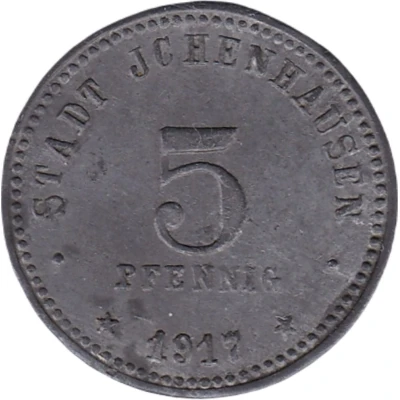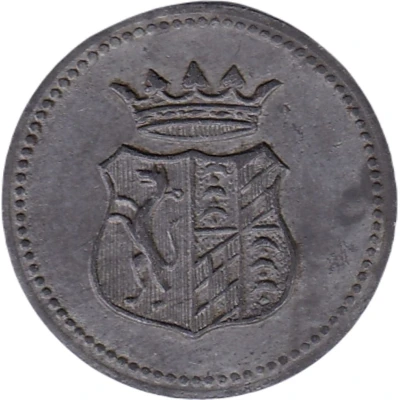


© gyoschak (CC BY-NC-SA)
5 Pfennigs - Ichenhausen
1917 year| Zinc | 2.08 g | 19.7 mm |
| Issuer | City of Ichenhausen (Federal state of Bavaria) |
|---|---|
| Emperor | William II (Wilhelm II) (1888-1918) |
| Type | Standard circulation coin |
| Year | 1917 |
| Value | 5 Pfennigs (5 Pfennige) (0.05) |
| Currency | Mark (1914-1924) |
| Composition | Zinc |
| Weight | 2.08 g |
| Diameter | 19.7 mm |
| Thickness | 1.2 mm |
| Shape | Round |
| Technique | Milled |
| Orientation | Medal alignment ↑↑ |
| Demonetized | Yes |
| Updated | 2024-10-04 |
| Numista | N#64717 |
|---|---|
| Rarity index | 79% |
Reverse
Beaded rim surrounding Coat of Arms centered
Edge
Plain
Comment
Issuing body: [Stadt, Bayern].Interesting fact
The 5 Pfennigs - Ichenhausen 1917 coin was minted during a time of economic turmoil in Germany, known as the "Inflationary Period" (1914-1923). During this time, the value of the German mark (the national currency) plummeted, and the prices of goods and services skyrocketed. As a result, many Germans turned to alternative forms of currency, such as local emergency currencies like the 5 Pfennigs - Ichenhausen 1917 coin, which was issued by the City of Ichenhausen in Bavaria. Despite its small denomination, this coin is a unique piece of history that highlights the economic challenges faced by Germany during World War I and its aftermath.